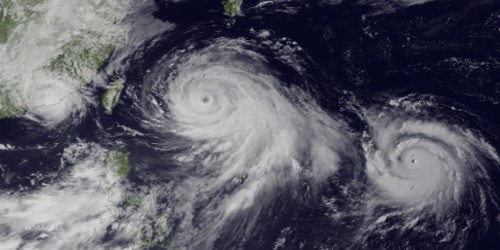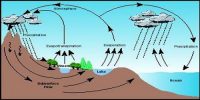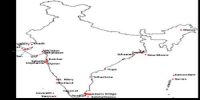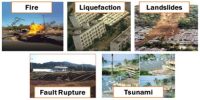Spatio-temporal Distribution of Tropical Cyclone in India
Tropical cyclones are intense low-pressure areas confined to the area lying between 30° N and 30° S latitudes, in the atmosphere around which high-velocity winds blow. Horizontally, it extends up to 500-1.000 km and vertically from surface to 12-14 km. Tropical cyclones are characterized by large pressure gradients. The center of the cyclone is mostly a warm and low-pressure, cloudless core known as the eye of the storm. The main parts of a tropical cyclone are the rainbands, the eye, and the eyewall.
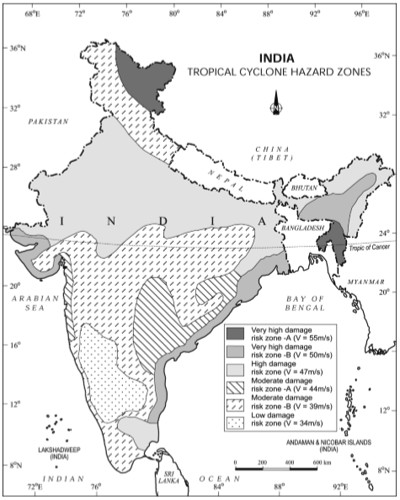
Fig: Tropical Cyclone Map in India
Owing to its peninsular shape surrounded by the Bay of Bengal in the cast and the Arabian Sea in the west, the tropical cyclones in India also originate in these two important locations. Though most of the cyclones originate between 10°-15° north latitudes during the monsoon season, yet in case of the Bay of Bengal, cyclones mostly develop during the months of October and November. Here, they originate between 16°-2° N latitudes and to the west of 92° E. By July the place of origin of these storms shifts to around 18° N latitude and west of 90°E near the Sundarban Delta. Table and Figure show the frequency and tracks of time of cyclonic storms in India.

Every year during July–September in the Northern Hemisphere and January–March in the Southern Hemisphere, cyclones strike regions as far apart as the Gulf Coast of North America, northwestern Australia, and the eastern Indian subcontinent.
